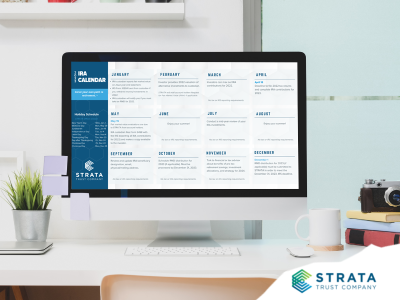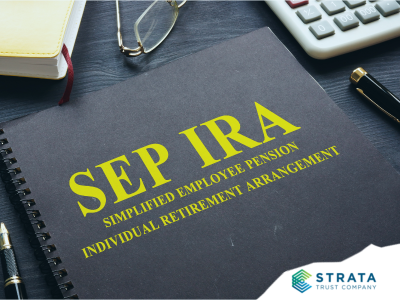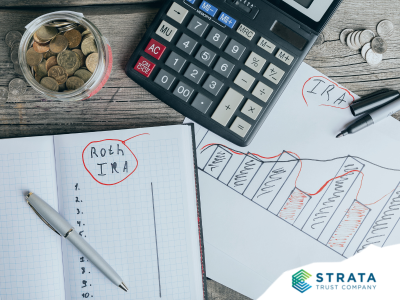If you fail to take a required minimum distribution (RMD) from your self-directed IRA, you’ll owe an excess accumulation tax to the IRS. This includes IRA owners age 70½, 72, or 73 and older, depending on the RMD starting age in effect for the year, as well as beneficiaries taking annual life expectancy payments from inherited IRAs. You must take at least the minimum amount required each year or pay the additional tax. However, recent law changes provide tax relief to certain beneficiaries who missed an RMD in 2021 or 2022, and to anyone who misses an RMD in 2023 or later.
 General RMD Rules
General RMD Rules
Upon reaching a certain age, IRA owners must begin taking RMDs each year from their (non-Roth) IRAs to ensure that the funds saved for retirement in tax-qualified savings vehicles become taxable during their lifetime.
- All RMDs, except the first one, must be taken by December 31 each year.
- The first RMD may be taken as late as April 1 of the year following the year you reach your RMD starting age. (The second RMD must also be taken that same year, by December 31.)
- All future RMDs must be taken by December 31st each following year.
You may take the RMD calculated for a specific IRA from any of your other (non-Roth) IRAs. Your IRA custodian can help you calculate the amount due for the IRA held with that custodian.
Non-Spouse Beneficiaries
Non-spouse beneficiaries taking life expectancy payments must begin annual distributions by December 31 of the year after the year the IRA owner passed away. Spouse beneficiaries have different timing rules for starting payments and more options if a payment is missed.
With all the recent law changes to these complex rules, it can be challenging to determine if you actually missed an RMD or if you are subject to the additional tax. Here are the rules for the last few years.
 RMDs for 2019 or Earlier
RMDs for 2019 or Earlier
Late RMD payments were subject to a 50% excess accumulation tax
Prior to 2020, the RMD starting age was 70½. If you did not take your entire RMD on time, you were subject to a 50% excess accumulation tax. The IRS could waive part or all of this tax if you could show that any shortfall in the amount withdrawn was due to a reasonable error and you took reasonable steps to remedy the shortfall.
To request a waiver, the missed RMD should first be distributed. IRS Form 5329, Additional Taxes on Qualified Plans (Including IRAs) and Other Tax-Favored Accounts, must be filed with the federal tax return for the year of the missing RMD and a letter to explain why the RMD was missed and that it has now been distributed. If the IRS does not grant the waiver, the 50% tax, along with any interest the IRS assesses, must be paid.
 RMDs for 2020
RMDs for 2020
RMD age increased, beneficiary depletion changes, and RMD delays
The SECURE Act of 2019 changed the RMD starting age to 72, beginning in 2020 for anyone who had not reached age 70½ by December 31, 2019. It also changed the beneficiary distribution options to require most beneficiaries to deplete the inherited IRA within 10 years.
The CARES Act of 2020 waived RMDs for 2020 because of the significant market drop at the start of the COVID pandemic. No one was required to lock in those losses and take an RMD in 2020, including first-year RMDs due for 2019 that hadn’t yet been taken and first-year RMDs due for 2020 by April 1, 2021.
 RMDs for 2021 and 2022
RMDs for 2021 and 2022
Beneficiary depletion clarity
While the new starting age of 72 for taking RMDs was easy to understand, everyone was struggling with some of the changes the SECURE Act made to the beneficiary distribution rules. Few people correctly interpreted the new 10-year rule until the IRS proposed regulations to clarify the application.
The IRS’s proposed interpretation explains that beneficiaries whose only distribution option is to distribute the inherited IRA within 10 years must also take annual RMDs during those 10 years if the IRA owner passed away after April 1 following the year they turned 72.
Because beneficiaries were unaware of this annual RMD requirement in addition to the 10-year rule, the IRS provided relief from the 50% tax for certain beneficiaries who missed an RMD in 2021 or 2022.1 If a beneficiary already paid the 50% tax for 2021, they could request a refund. The IRS guidance was not entirely clear, but it appeared that since the penalty was waived, the RMD did not have to be taken. This relief applies only to beneficiaries who are required to follow the 10-year rule and inherited…
- From an IRA owner who passed away in 2020 or 2021 after the IRA owner’s required beginning date (April 1) for starting RMDs, or
- From another beneficiary who had already started taking life expectancy payments and passed away in 2020 or 2021.
This relief does not apply to IRA owners taking RMDs, beneficiaries who are “eligible designated beneficiaries” and may choose to take life expectancy payments, or beneficiaries who inherited IRAs before 2020.
 RMDs for 2023 and Future Years
RMDs for 2023 and Future Years
Reduced RMD penalties
Beginning in 2023, thanks to the SECURE 2.0 Act of 2022, the penalty for a missed RMD is reduced to 25% of the amount that should have been taken out of the IRA. This penalty reduction applies to RMDs due for 2023 and later years – not missed RMDs from previous years. The tax will be further reduced to 10% if you take the RMD within the “correction window” and file your tax return within this time frame reflecting the penalty tax. The correction window is the end of the second year after the RMD should have been taken, or when the IRS issues a deficiency notice or assesses the tax if earlier. You must still file Form 5329 and a statement of explanation to your federal tax return for the year.
Additional Information
A proactive approach to RMDs is the best approach. If you are a beneficiary of an IRA or an IRA account holder where RMDs apply, it is best to start early. At STRATA, you can schedule your RMD at any time and even schedule prorated distributions throughout the year.
You can view more information on RMDs, learn how best to handle illiquid investments, and find other relevant tax reporting processes in our Knowledge Center.
If you have any questions regarding the RMD for your STRATA account, please contact our self-directed IRA experts for assistance. If you need prior-year tax forms they can be found on the IRS website.













